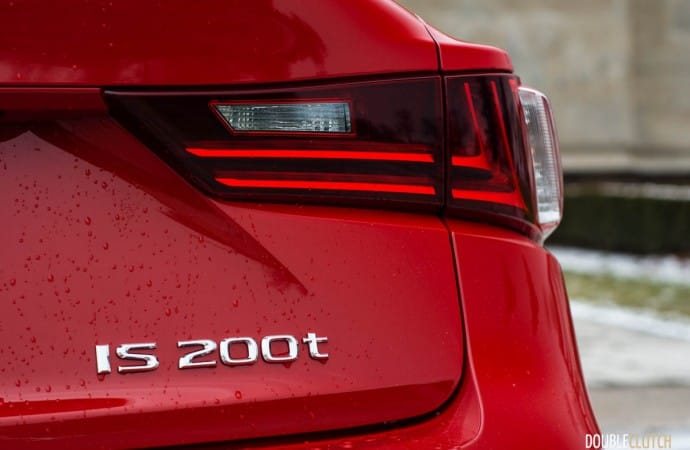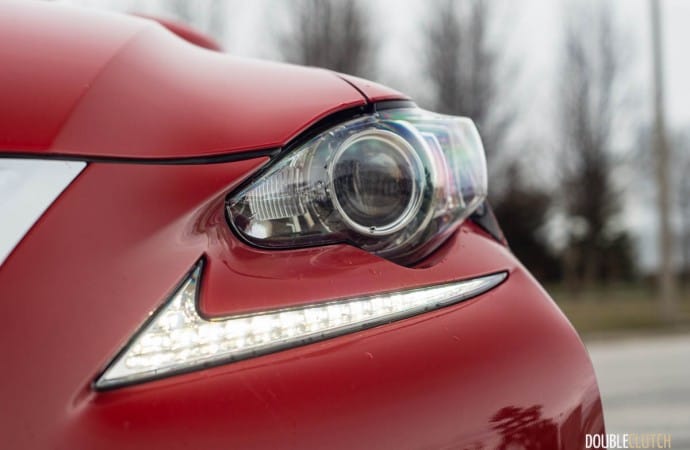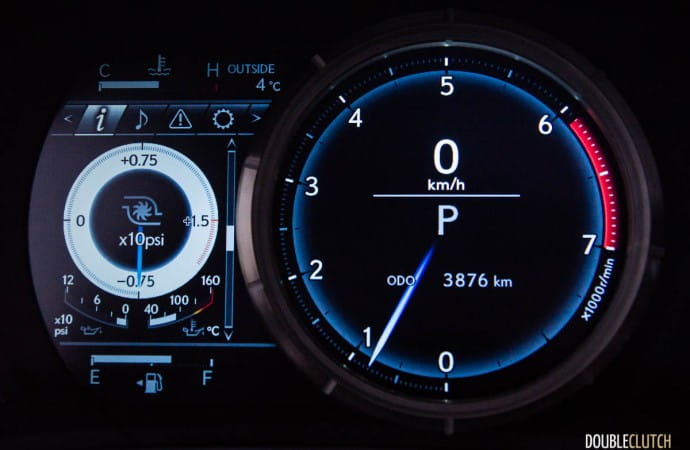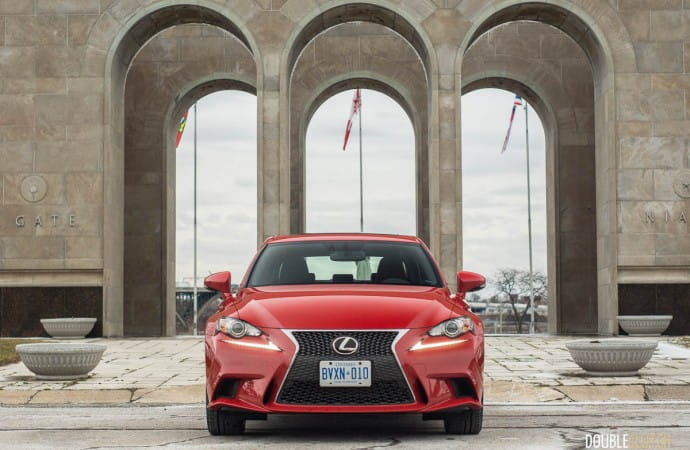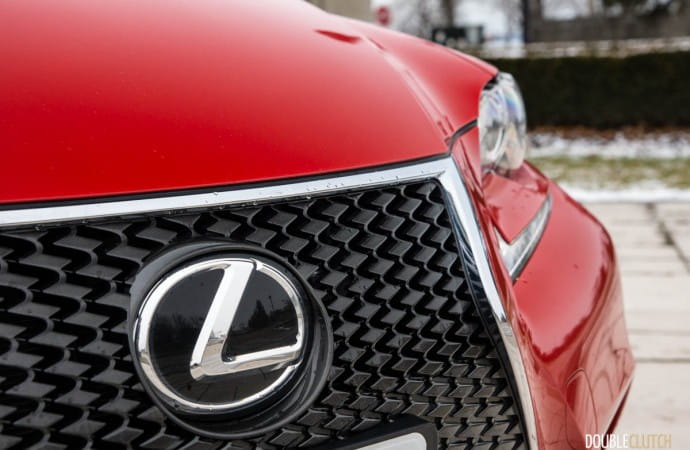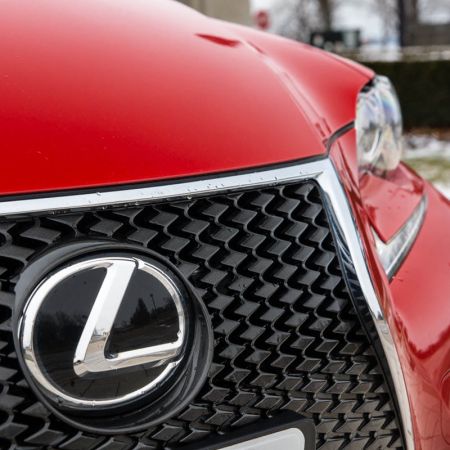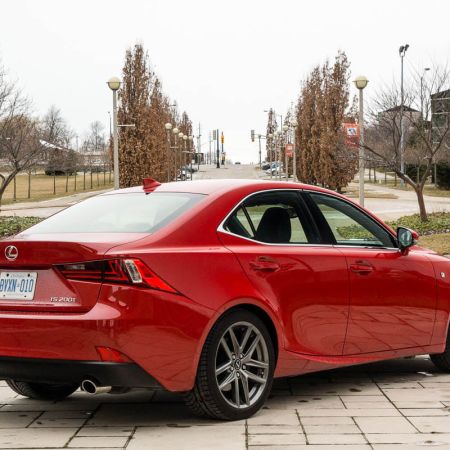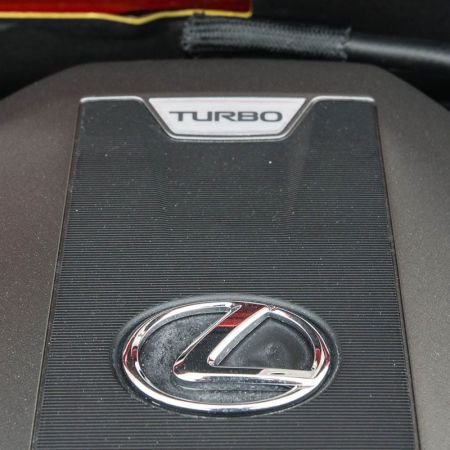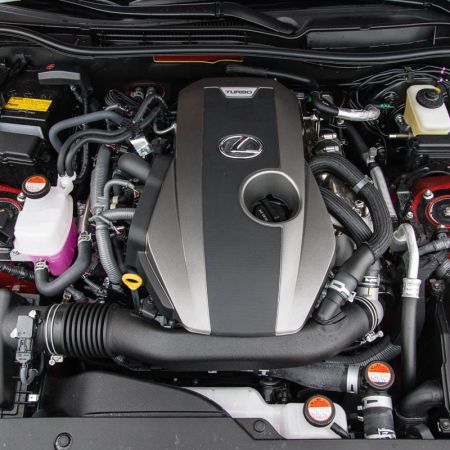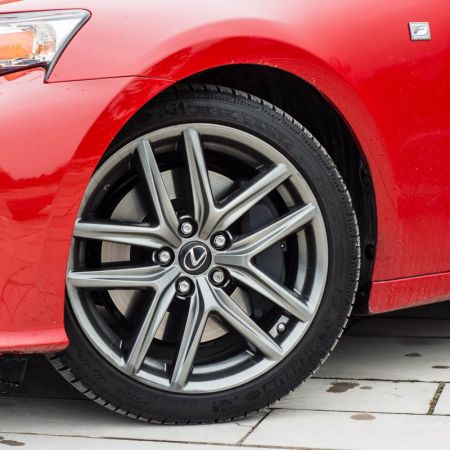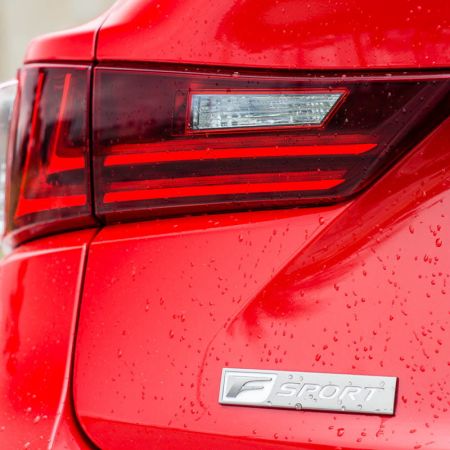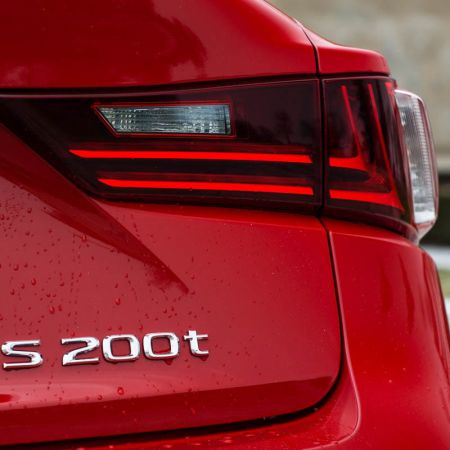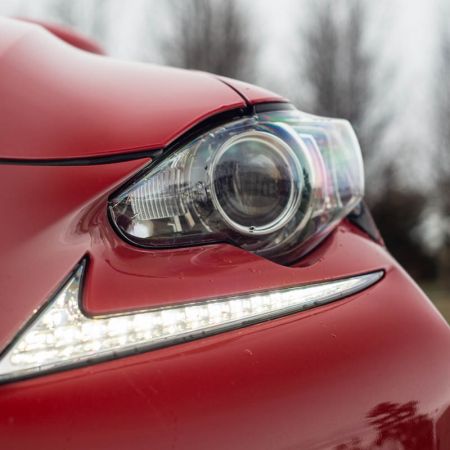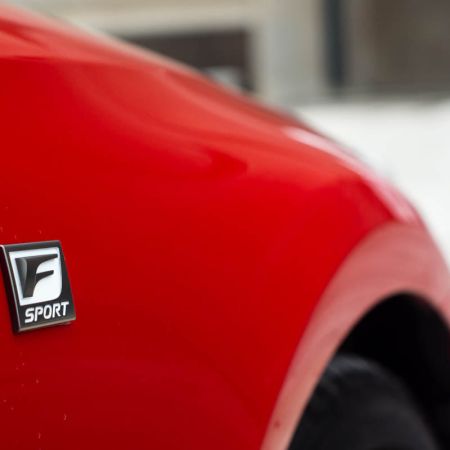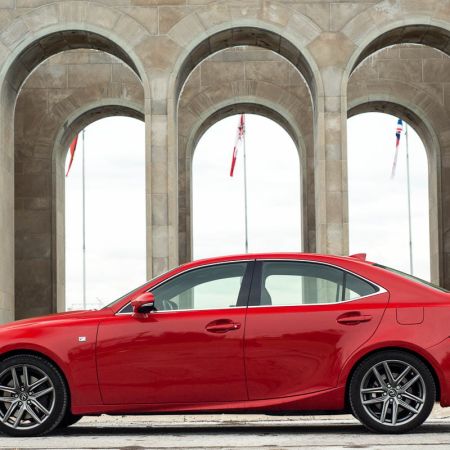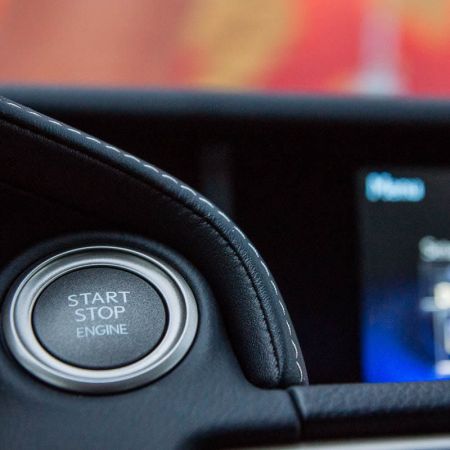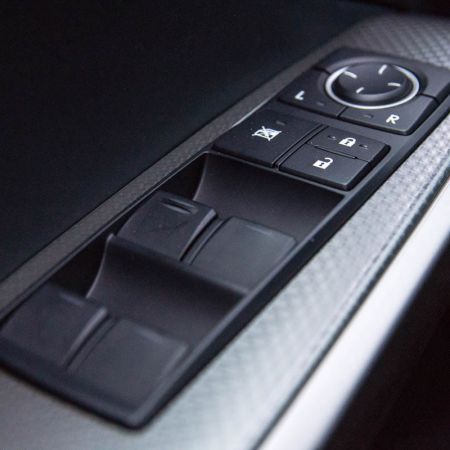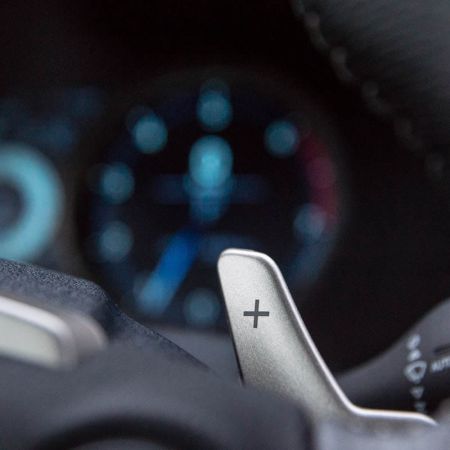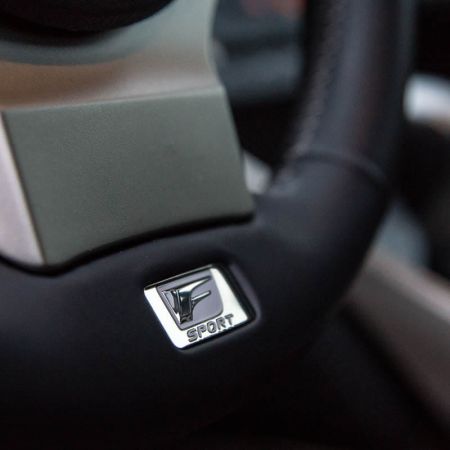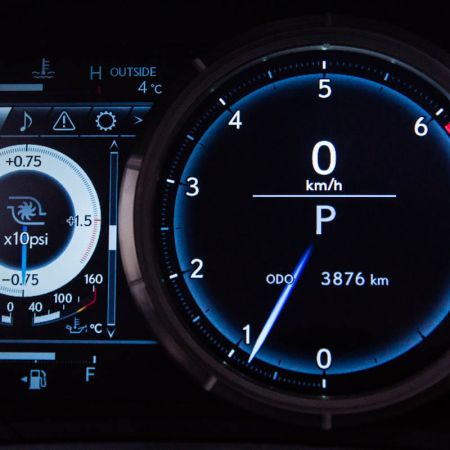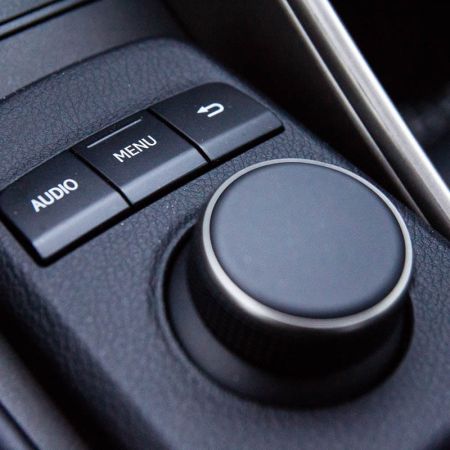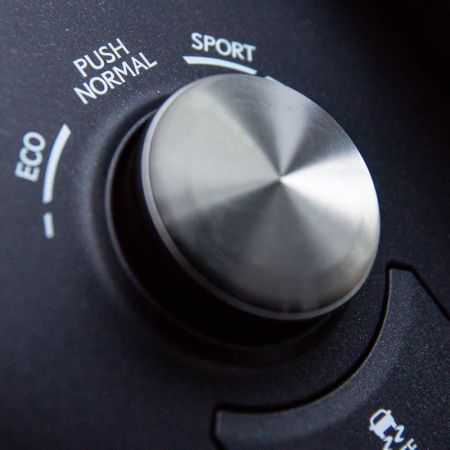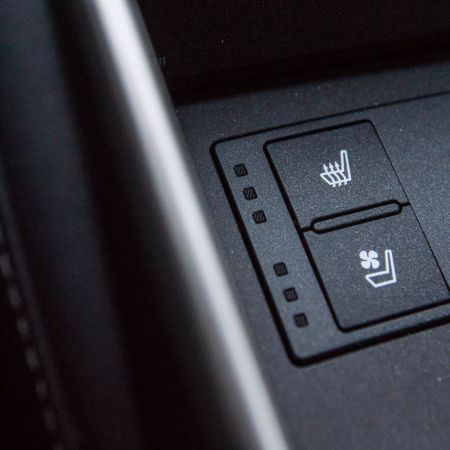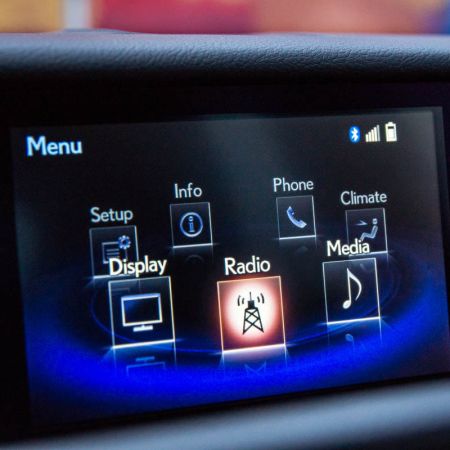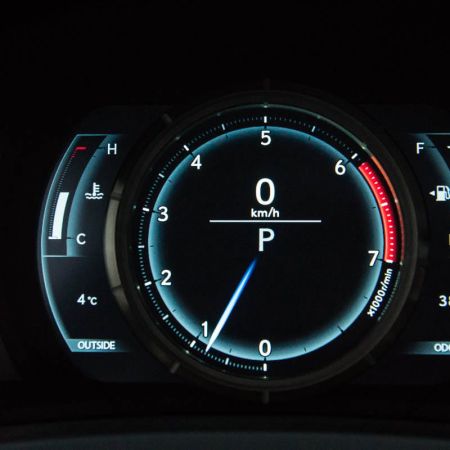The reason for this is that I myself own a first-generation Lexus IS300. It heralded the return (or start) of the Lexus brand to performance, and the IS300 was a legitimate competitor to the BMW 3-Series of the time. To this day, I love its simple inline-six engine, relatively light weight, and rear-drive configuration. It was a car that was on my radar even before I first got my driver’s license, and demand for the first-generation car still remains relatively high to this day for a clean example.
Back in 2014, I reviewed the Lexus IS250 F-Sport AWD and found it to be a very different machine. The biggest talking point remains its styling, but I’m in the camp that likes the edgy styling. Lexus and Toyota have both been accused of producing boring cars in the past, so this car was a big departure. Now that we’re into 2016, the Lexus “spindle grille” design has made its way to the rest of the lineup, and more recent iterations have seen better acceptance from the marketplace as well as the horde that is the Internet. The styling hasn’t actually changed too much for this year, I needed to make sure it was the new Lexus IS200t F-Sport I was picking up for the week – the only way you can really tell is to look at the badge on the trunk lid. Painted in a striking shade of Redline Red, it certainly stands out.
You have to remember that one of the attributes of the “premium” luxury car was smooth power – luxury cars in the past could never be offered with a four-cylinder engine, due to the perceived inferiority complex and poorer NVH. Technology and engineering have come a long way – things like modern forced induction and direct injection have changed the game significantly. The quirky old turbo motors of the ‘80s haven’t been in the picture for a while, and consumer demands have certainly changed since then. The endless pursuit for reduced fuel consumption has dramatically changed the playing field – you’ve been able to get an entry-level BMW 3-Series, Mercedes-Benz C-Class, and Audi A4 – all with turbocharged 2.0L four-cylinder engines.
Lexus soldiered on with its naturally-aspirated 2.5L V6 for a number of years, and while it got the job done, the small V6 was out-gunned by its more modern counterparts, in terms of both power and efficiency. Its strong suit was its smoothness and sound that only a six-cylinder engine could provide. Some competitors were able to extract as much as 50 additional horsepower, and the forced-induction allowed for super-friendly torque curves that were easy to utilize, right from the bottom of the rev range. For many, the IS250 was “enough”, but enthusiasts usually opted for the IS350, with its much more powerful 3.5L V6.
Lexus has gotten with the times and is now offering an all-new 2.0L turbocharged four-cylinder gasoline engine to serve as the entry-level choice in the IS lineup. Featuring direct-injection (through Toyota’s excellent dual-type D4S system), intercooling, and twin-scroll turbocharging, it is good for 241hp at 5800rpm, and 258 lb-ft of torque from a useful 1650rpm. For the sake of comparison, this is a bump of 37hp and 66lb-ft of torque, compared to the old IS250’s V6. There’s also the benefit of all that power and torque being accessible at a much lower revs. The old V6 loved to rev, but you also needed to spin it well past 4000rpm in order to get moving quickly. The 241hp rating puts it right in the middle of its class.
One difference that sets the IS200t apart from some of its peers is that it can only be had in rear-drive format. For what it’s worth, I had zero issues with wintertime traction – thanks to winter tires on those gorgeous 18-inch F-Sport wheels. The F-Sport package comes with wider 255-section tires out at the back. Power is routed to the rear axle by way of an eight-speed automatic transmission. Using components and technology derived from the IS-F, the IS200t fires off very satisfying gear changes, and the additional two ratios allows for the engine to stay in its sweet spot. The only downside here is that this excellent eight-speed automatic (an in-house design, by the way), is only available on the rear-drive IS200t. As soon as you opt for all-wheel drive, a six-speed automatic is your only choice.
What defines the IS200t is the unique hardware under the skin that sets it apart from its more traditional six-cylinder brothers. Its mode of propulsion is very different, but on the inside, the IS largely remains the same as it ever was, since 2014. The nifty physical digital instrument cluster hasn’t changed at first glance, but if you shift the tachometer over to the right and scroll down the option pages, you have the option of seeing a digital boost gauge! Borrowed from the NX200t, the boost gauge also displays oil pressure, as well as oil temperature – very handy.
Aside from the additional info in the instrument cluster, the IS200t interior remains a familiar place. The second and more obvious difference is the infotainment system. The IS200t doesn’t feature Lexus’ Remote Touch interface, so there isn’t a mouse-like joystick, nor is there a notebook-style touchpad (as seen in the NX200t). Instead, you get a rotary dial and a simpler infotainment screen. Navigation isn’t available as an option, and you see the difference between this system and the fully-featured interface that comes on the IS350, for example. The system is slow to respond to your inputs as you turn the rotary dial. It could very well be a case of Lexus trying to keep the IS200t apart from its more expensive siblings, but this is a theme we will see again shortly.
For some reason, Lexus Canada decided to omit a reverse camera altogether in the IS200t. Now considered to be a staple feature across the industry, the lack of a reverse camera is very puzzling. We’re now at a point that even the most basic subcompact vehicles for sale have it available as an option – but not here. What’s even more puzzling is that ventilated seats are made available if you opt for the F-Sport Series 1 package (the only option package). Ventilated seats are great for long trips in the summer, but up here in Canada, you can only expect to make use of the feature for three or four months of the year. On the other hand, people make use of the reverse camera every single day. Similar to the Scion iM (reviewed here), which didn’t offer heated seats, but gave you power folding mirrors, the IS200t is equipped in a strange manner.
In terms of pricing, the IS200t sits at the bottom-end of the IS lineup. Base models start at a MSRP of $39,450, before any additional taxes and dealer fees. The F-Sport Series 1 package that my tester was equipped with adds an additional $4,000. What you get are the aforementioned ventilated seats, the unique F-sport bodykit and wheels, and power sunroof, those excellent F-Sport gauges to go with a three-spoke F-Sport steering wheel. This brings the as-tested price to $43,450 – which coincidentally, is within spitting distance to the new IS300 AWD. It doesn’t feature the new engine or eight-speed automatic transmission, but the traction afforded by AWD may be more desirable by more people.
Where the IS200t fits in the almost-midsize luxury sport sedan segment is interesting. Even just ten years ago, rear-drive was the standard, and all-wheel drive was an option that only a few selected. Nowadays, you can’t even get a BMW 3-Series or Mercedes C-Class in rear-drive format – xDrive and 4MATIC are selected by default. The only rear-drive options in the class you can readily get these days are the Cadillac ATS and the Infiniti Q50. The Cadillac ATS boasts an excellent chassis (probably one of the best in the class), and the Q50 comes loaded with a lot of horsepower out of the box. The Acura TLX and Volvo S60 are the offbeat choices here, but in base format only send their power to the front wheels.
In the driver’s seat, the turbo-four does good things to the IS chassis. The reduced weight (1625kg in the IS200t versus 1695kg in the IS300 AWD) and slightly better weight distribution (thanks to the smaller engine hanging off the front-end) means the IS200t feels a little better to throw around. The turbo-four also technically produces more torque than the midrange V6 in the IS300 AWD, and the rich torque curve means you can feel the boost in the seat of your pants in a more practical way. The eight-speed automatic is particularly well-matched – though I’d like to see it paired up with the V6s. The electrically-assisted power steering is actually pretty good for today’s standards, with decent heft, and what amounts to decent feedback from the road – for an electric system.
Lexus is well known for their refined and luxurious feel throughout the lineup. The V6-powered IS300 and IS350 pipe some of the intake sound to the cabin, which sounds great, but the IS200t doesn’t quite receive the same benefit. In contrast, it almost seems that Lexus tried their hardest to keep the unflattering four-cylinder sounds out of the cabin. As a result, you don’t hear any of the cool turbo noises that one might expect, let alone a lot of the outside world. Even with noisy winter tires, the IS200t stays impressively quiet.
One of the claimed benefits of downsizing and forced-induction is improved fuel economy, as well as the aforementioned increase in horsepower and torque. Lexus rates the IS200t at 10.6L/100km in the city, 7.2L/100km on the highway, and 9.0L/100km in a combined cycle. After about 800km of mixed wintertime driving, I ended up with an indicated average of 9.6L/100km. Just like my own IS300, the IS200t will accept 66L of premium 91-octane fuel.
The Lexus IS200t does more than a great job replacing the IS250. I would have thought the new four-cylinder would give up too much refinement, but the feeling of turbo boost, paired up with the well-behaved 8-speed auto brings it up to today’s standards. These new standards have evolved to accept a four-cylinder engine that makes up the basis of today’s entry-level sedan. On its own, the IS200t combines a good (if not class-leading) powertrain with a chassis that sits on the sportier side compared to some of its peers.
When you compare it to some of its peers, some of its attributes stand out a little bit. The bottom line is, the IS200t is just a few small changes away from being a strong competitor to the benchmarks in its class. Many prospective consumers looking for this kind of car like to look at specifications and feature comparisons, so the IS200t comes up a little short in a few ways. Lexus Canada has been reasonably good at shuffling around their feature sets and option packages, so let’s hope they can do the same for the IS200t.

